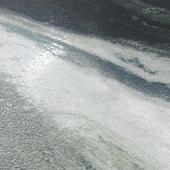Digicol Next confirms the reduction of VOC by 95%

The first water-based digital glue produced by Smaltochimica has been used in industrial production since March with excellent results in terms of reduction of emission parameters.
Following the digital revolution, the ceramic industry has seen a further step forward in terms of technology with the rapid development and enormous market success of large size surfaces, prompting a race towards digitalisation of the entire production process.
The ongoing cycle of innovation means that manufacturers can now benefit from increasingly high-performance digital printheads capable of handling large laydown quantities. The combination of sophisticated and highly complex aesthetic research and the wide range of available products (coloured inks, material inks, glues and digital glazes) allows for the creation of textured and customised surfaces.
At the same time, however, the increased use of digital effects means that very high organic loads are introduced into the kilns, which in turn has a significant impact on flue gas emissions. In order to manage this aspect effectively, all players involved in the production chain must carry out constant research.
Smaltochimica, a leader in digital glue production renowned for its attention to environmental issues, has decided to develop water-based products which guarantee excellent application and functional performance while reducing the emission of combusted organic substances and consequently odours, even in the case of high laydown quantities.
One of these products is DIGICOL NEXT, the first water-based digital glue available in the Italian ceramic district.
This glue was developed as a partnership between Smaltochimica, a leading ceramic tile manufacturer, a manufacturer of digital machines, expert consultants in the field of emissions and the University of Modena and Reggio Emilia, with which the company has been cooperating effectively for several years.
An important role in the development of Digicol Next was played by two production campaigns that allowed an effective comparison to be made between a water-based product and a digital glue with a traditional formulation. In very high laydown conditions (99 g/m2, size 60x120 cm), these comparative tests revealed a highly significant reduction in all measured emission parameters, all of which were in any case well within the legal limits as shown in the graph.
Digicol Next has been used in industrial production on a permanent basis since March.
Did you find this article useful?
Join the CWW community to receive the most important news from the global ceramic industry every two weeks





















